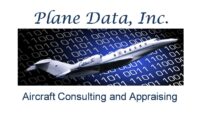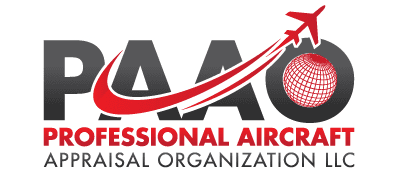Download or Read the Report Below
Below, you’ll find our report “Top Reasons an Attorney Should Use a Professional Appraiser.” If you’d like to download this report and read it later, fill out the form below and we’ll send you a copy.
Top Reasons an Attorney Should Use a Professional Appraiser
Knowledge is Power
Regardless of what position you are taking in a legal case, you need the input of a Professional Aircraft Appraiser either as an expert witness or as an aviation consultant. You can bet the opposing counsel will be using their “expert”.
Make sure that yours is an experienced, trained professional with aircraft appraisal credentials!
Most cases that require the services of an aircraft appraiser involve diminution of value from a damage event or missing records.However there are situations such as divorces when only a straightforward report is really needed. Regardless, you and your client need to have factual data and information available in order to make informed decisions.
In the majority of situations, the Certified Appraisal Report written in conformance with the Uniform Standards of Professional Appraisal Practice (USPAP) will stand on its own merits due to the nature in which the data is gathered. There is usually no further need for testimony or a courtroom appearance. However, that support is available if needed. Now, let’s examine a few facts about the aircraft appraisal industry and aircraft valuation.
It is important to acquire the services of an experienced, trained professional if the objective is to obtain a credible, reliable opinion of value.
The Aircraft Appraisal Industry is unregulated. This means that ANYONE can claim to be an aircraft appraiser. There are no formal training requirements and no requirements to have any background in aviation whatsoever. As a result, many “experts” are little more than aircraft brokers or dealers versus trained, experienced, professional aircraft appraisers and this shows in their reporting and analysis.
There are also no industry standards regarding the report itself. This means that ANY number (verbal or written) meets the basic requirements of the “appraisal”. Be suspicious of those who simply provide numbers in letters or unsigned reports.
There is no public database of aircraft selling prices. Unlike real estate where the appraiser may visit the local courthouse to see what a given lot or house sold for, there is no equivalent system when it comes to aircraft. In fact, the number of variables involved in the assessment of a specific aircraft’s value makes the selling price alone somewhat meaningless.
Publications cannot be used to determine the value of a specific aircraft. This is not just an opinion, it is the disclaimer found in most publications and websites. Publications are in the publishing business and not the aircraft appraisal business. Their revenues are driven by subscriptions and advertising.
There is no indication that the data submitted (and subsequently published) is validated or verified.
With the exception of the Professional Aircraft Appraisal Organization’s (PAAO) standardization for its members, there is no consistency in the aircraft appraisal industry and EVERYONE tends to be an “expert”.
When researching the requirements of aircraft appraisers and deciding who you should hire, you may find very little information.
This is not too surprising in the aircraft industry; aside from selling, brokering or piloting aircraft, a good number of evaluators have no real training or background in analyzing both the aircraft and the market to arrive at an unbiased, creditable, reliable opinion of value – or “market value”. This deficiency becomes clear in the overall analysis and reporting. Some evaluators will not leave their office to physically examine the aircraft and its records.
The absence of field visits should be a red flag to any attorney.
So, what is the attorney in need of an expert to do and who do they hire to assist them? And, what should one expect from a professional appraiser?
With the variation in biases, knowledge, skills, abilities and experience of “appraisers” in the industry, along with the fragmented data of a diverse market, there can be a wide variance in value opinions for the same aircraft. Some of this variance can be accounted for but wide variances typically involve a misrepresentation of the facts to present a predetermined result, missed details or an incorrect analysis.
Professional Associations Matter
The PAAO is the largest and oldest global organization that is focused exclusively on the evaluation and documentation of general aviation aircraft – including pistons, turboprops, business jets and helicopters.
The PAAO only accepts aviation professionals who meet its minimum requirements and all members must undergo training and testing before they are able to issue reports to the general public.
Members of the PAAO also adhere to a strict code of ethical behavior to ensure that they act in an unbiased and independent manner – and these requirements are critical and unique in the aircraft appraisal industry.
One important point to remember is that it is unethical for any PAAO member acting as an appraiser to champion a client’s cause or outcome in their analysis and reporting.
However, PAAO members who are acting as an “Appraisal Consultant” and NOT proving an aircraft appraisal report may choose to champion an outcome or cause.
Training is Key
At this point, readers may be wondering about the need for training.
After all, determining an aircraft’s value involves little more than plugging in the year, make and model of an aircraft into any web tool or publication and then including the “add-fors” to determine the amount the aircraft is worth.
This is the first mistake typically made by most evaluators.
It’s important to understand that there are two basic methods used to appraise aircraft; each method starts with a basic configuration or model.
tIn the case of publications and websites, the typical model is the “Average Retail” number or model, which is configured with “average” time on the airframe, mid-time engines and equipped with factory original avionics.
Aside from newer aircraft, most candidate aircraft don’t fit this model, so adjustments are needed. The limitations of the publication itself, and the manner in which these adjustments are applied, can create significant errors.
One example involved a broker’s method of determining an aircraft’s price using a publication.
The aircraft in question had a G1000 system with a WAAS upgrade. So, according to the publication, the broker added $30,000 – as instructed by the publication. Here’s the problem.
While the WAAS upgrade will COST about $30,000, the actual VALUE increase is a small fraction of this amount, because the standard G1000 system for that model-year aircraft will have non WAAS units that must be replaced and the relative value difference between these two pieces of equipment is very small.
Simply adding $30,000 overvalues the subject aircraft; this is only one of the many issues that tend to occur using a publication.
Finding this type of error is somewhat typical and encountered routinely in the appraisal analysis.
The other appraisal method used by the PAAO is quite different and begins with a model called the “Average Green Airframe”. This is a mathematical model representing the specific year, make and model stripped of all key value points – a “blank page” if you will.
The aircraft’s value is then determined by what is found through field research and firsthand analysis. Essentially, the aircraft is “built”, based on the status and condition of a number of value points obtained from the field research – which is why it is critical that the professional aircraft appraiser leave their office to physically examine the aircraft and its records.
What to Expect
So, what should someone expect from the professional aircraft appraiser?
One of the most critical advantages a client should expect is that the professional appraiser will sign their report and leave his or her office to physically examine the aircraft and related records.
These two requirements are unique to PAAO members, because EVERY signed report requires a physical examination of the aircraft along with its records.
Another benefit clients should expect is that the report contains details about the subject aircraft, along with an indication of what the appraiser did or did not do, their connection to the aircraft or owner (if any), and any biases they may have.
You should also expect the appraiser to perform some analysis of the market and how the subject aircraft “ranks” in this market and why, along with any key photos and findings.
In some cases, a retrospective view of the aircraft’s value is needed or even multiple views of the aircraft’s value over time. These types of requests are fairly straightforward to address.
Reports that are less than ten pages long will not provide this level of analysis; rarely are these shorter reports signed.
Clients should also expect an analysis using data that is reflective of actual sales data (market value), something that really isn’t found in publications or websites.
It is important to note that publications are in the business of selling subscriptions and publishing information – NOT the aircraft appraisal business. Publications tend to distribute information they received with very little analysis – such as the WAAS upgrade from the previous G1000 example.
Many years ago, the PAAO recognized that information found in the publications was unreliable and inadequate for the purpose of valuing specific aircraft and developed their own database that was “purpose built” for appraising aircraft in a credible, reliable manner.
Reports that are less than ten pages long will not provide this level of analysis; rarely are these shorter reports signed.
This database is updated monthly (versus quarterly for publications) and derived from a number of creditable reliable sources, such as the banking industry.
The analytical process generally involves an analysis of the aircraft’s specifics – such as details found in the aircraft appraisal reports involving unbiased on-site examination of the aircraft and records by trained professionals.
The market data is then matched to these details and is provided by trusted parties who have no interest in misrepresenting this information (selling prices).
The important point to understand is that a trained professional is available that can help attorneys make informed strategic decisions, based on factual data.
In Summary
In many cases, key decisions can be made very early in the process to determine a legal strategy based on solid appraisal experience and insight.
In other cases, the professional appraisal report will provide a basis for negotiating or settling the case at hand.
In still other situations, the professional appraisal report will help the attorney’s client make an informed purchase decision or understand if they even want to proceed with the purchase of a given aircraft.
Regardless of the case or need, credible, reliable information is generally required in order to make informed strategic decision.





